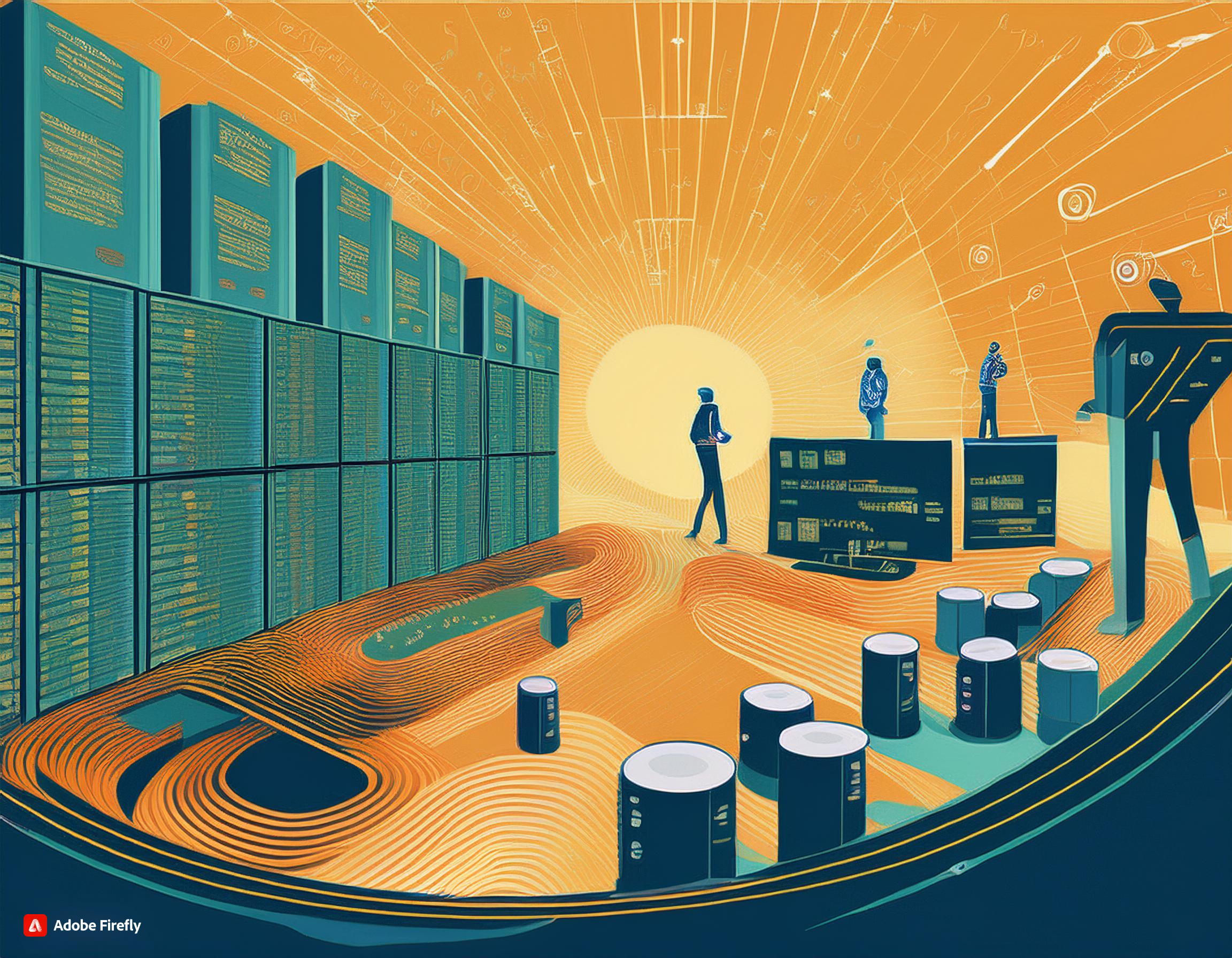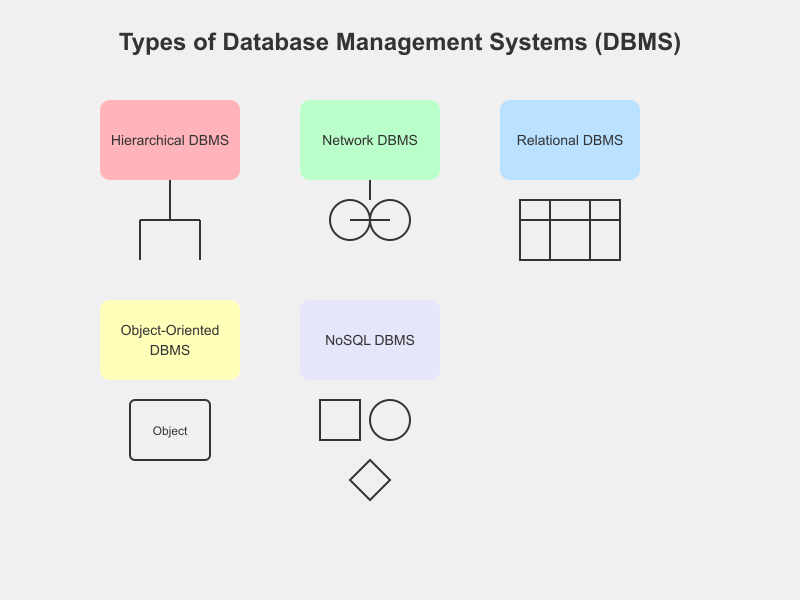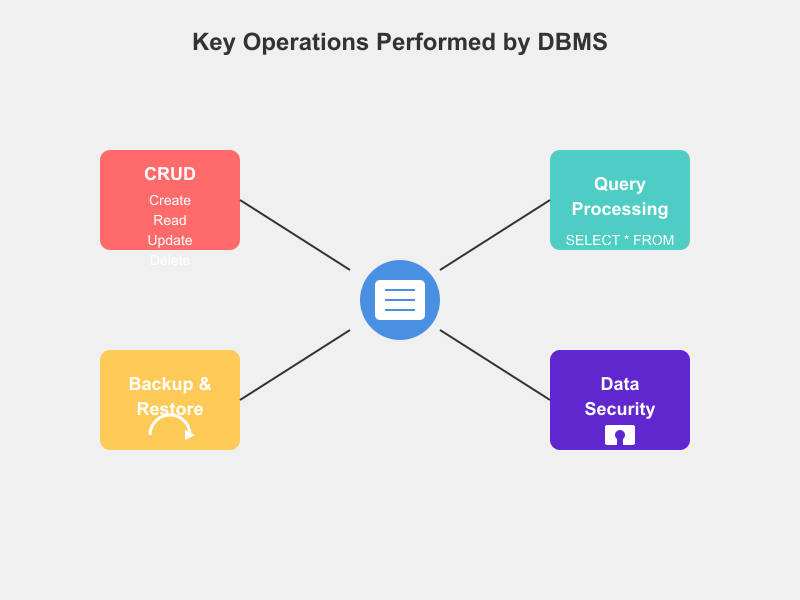Beginner's Guide to Database Management Systems (DBMS)
 Uttam Mahata
Uttam Mahata
Introduction
In today's data-driven world, databases form the backbone of almost every application and system. Whether it’s a small web application or a large enterprise system, managing data efficiently is crucial. This is where a Database Management System (DBMS) comes into play. In this blog, we’ll dive into what DBMS is, its types, and why it’s essential for modern computing.
Topics Covered in This Blog:
What is a Database?
What is a Database Management System (DBMS)?
Importance of DBMS
Types of DBMS
Components of DBMS
Key Operations Performed by DBMS
1. What is a Database?
A database is a structured collection of data. Data in a database is organized so that it can be easily accessed, managed, and updated. Databases store information that applications need to function, such as customer records, transactions, and product data.
Example:
A simple example of a database is a spreadsheet that stores information in rows and columns.
2. What is a Database Management System (DBMS)?
A DBMS is software that provides an interface to interact with a database. It allows users to perform various operations on the data, such as inserting, updating, deleting, and retrieving data. The DBMS manages the data, the database engine, and the database schema to facilitate organized data handling.
Example:
Popular DBMS software includes MySQL, PostgreSQL, Oracle, MongoDB, and SQL Server.
3. Importance of DBMS:
Data Integrity and Security: DBMS ensures data is consistent and secure by enforcing rules and constraints.
Efficient Data Management: It allows for efficient data retrieval, updates, and administration.
Backup and Recovery: DBMS ensures data is backed up regularly and can be restored in case of failure.
Concurrency Control: It supports multiple users accessing and modifying the database simultaneously without conflict.
4. Types of DBMS:
Hierarchical DBMS: Data is organized in a tree-like structure (parent-child relationships).
Network DBMS: Allows more complex relationships between entities through a graph structure.
Relational DBMS (RDBMS): Stores data in tables (relations), which can be connected using keys.
Object-Oriented DBMS (OODBMS): Stores data in the form of objects, similar to object-oriented programming.
NoSQL DBMS: Designed for unstructured data, useful for handling large volumes of varied data types (e.g., MongoDB).

5. Components of DBMS:
Database Engine: Core service for storing, processing, and securing data.
Database Schema: Structure that defines the organization of data.
Query Processor: Interprets and executes database queries.
Transaction Manager: Ensures all database transactions are processed reliably.
Storage Manager: Manages the physical storage of data.
6. Key Operations Performed by DBMS:
CRUD Operations: Create, Read, Update, and Delete data from the database.
Query Processing: Allows users to retrieve specific data by writing queries (e.g., SQL queries).
Backup and Restore: Ensures data availability in case of hardware or software failures.
Data Security: Enforces user access controls, ensuring only authorized users can access or modify data.

In this introductory blog, we’ve discussed the basics of DBMS, its importance, and the different types of systems available. As we proceed in this blog series, we’ll dive deeper into each type of DBMS, how they work, and how you can leverage them in your development process. Stay tuned for the next blog, where we’ll explore "Relational Database Management Systems (RDBMS)" and why they are so widely used.
Subscribe to my newsletter
Read articles from Uttam Mahata directly inside your inbox. Subscribe to the newsletter, and don't miss out.
Written by

Uttam Mahata
Uttam Mahata
As an undergraduate student pursuing a Bachelor's degree in Computer Science and Technology at the Indian Institute of Engineering Science and Technology, Shibpur, I have developed a deep interest in data science, machine learning, and web development. I am actively seeking internship opportunities to gain hands-on experience and apply my skills in a formal, professional setting. Programming Languages: C/C++, Java, Python Web Development: HTML, CSS, Angular, JavaScript, TypeScript, PrimeNG, Bootstrap Technical Skills: Data Structures, Algorithms, Object-Oriented Programming, Data Science, MySQL, SpringBoot Version Control : Git Technical Interests: Data Science, Machine Learning, Web Development